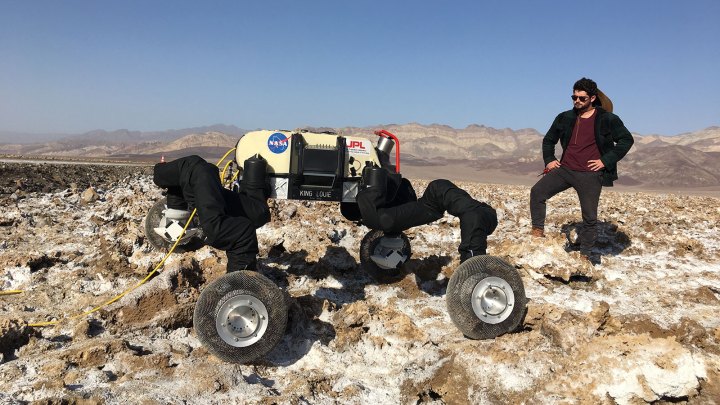
When it comes to exploring far off planets, robots need to be able to tackle all sorts of challenges, so NASA has been working on a series of climbing robots to take on different tasks in inhospitable environments.
First up is LEMUR (Limbed Excursion Mechanical Utility Robot) which can climb rock walls using hundreds of fishhooks in its fingers. It uses A.I. to navigate around obstacles that it cannot climb, and is one of NASA’s first generation of climbing robots. It was developed to perform repair tasks aboard the International Space Station, and below you can see it in a field test in Death Valley, California.
Then there’s the somewhat terrifying-looking Ice Worm, which was adapted from one of LEMUR’s limbs. The Ice Worm crawls slowly along slippery, icy surfaces by compacting its body before extending forward, just like an inchworm. It can even climb up inclined icy surfaces by drilling one end of itself into the ice, then inching the other end forward and drilling again. This is useful for collecting samples from icy environments as it is very stable and won’t slide around when collecting material.
There’s also RoboSimian, shown in the picture at the top, which was designed to aid in disaster scenarios. Now it has been adapted for icy environments as well. It is similar in structure to LEMUR, but instead of grippy feet, it has springy wheels made from piano wire. This makes the wheels flexible, which means it can roll over uneven ground. It’s being tested for eventual deployment to icy off-world locations like Enceladus, a moon of Saturn that has both ice and silt on the surface.



